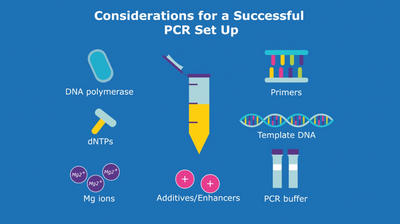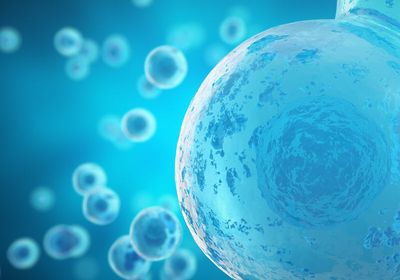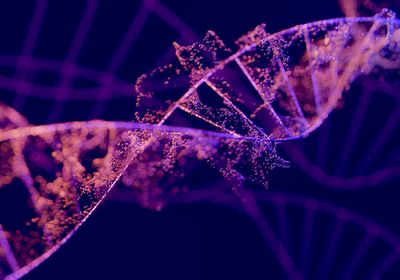What Are Humanized Mice?
Humanized mouse models are mice that scientists modify in the laboratory to host human cells, tissues, or genes, or portions of a person’s microbiome. Researchers use humanized mouse models to study aspects of human biology and health in living organisms. Historically, functional studies of human health relied on ex vivo analyses and clinical trials that are costly and potentially limited by ethical constraints. Humanized mice help researchers study human health in vivo and overcome limitations of cell culture, tissue culture, and clinical trials.1,2

How Are Humanized Mice Made?
Scientists use several methods for generating humanized mouse models to answer a variety of research questions.3 Many of these techniques rely on immunodeficient mouse strains to ensure the long-lived engraftment of human cells or tissue.4 Three common methods for generating humanized mice include engraftment of the human immune system into immunodeficient mice, replacement of mouse genes with their human counterparts, and transfer of germs from the gut of a human donor into a germ-free mouse.2,3,5,6
![This infographic includes three panels, each with an icon and text that highlights one of three methods used to generate humanized mice. Panel 1 is accompanied by an icon of antibodies and states “Human immune system engraftment into an immunodeficient mouse (eg, humanized immune system [HIS] mice transplanted with human hematopoietic cells, used to study immune responses).” Panel 2 is accompanied by an icon of a DNA double helix and states “Replacement of mouse genes with their human homologues (eg, genetically humanized mice expressing the human ACE2 receptor, used to study SARS-CoV-2 infection).” Panel 3 is accompanied by an icon of the human intestinal tract and states “Transfer of fecal microbiota from a human donor to a germ-free mouse (eg, human microbiota-associated [HMA] mice, used to study the role of the gut microbiome in pathologies such as diabetes and cancer).](https://547446.fs1.hubspotusercontent-na1.net/hubfs/547446/Picture1-3.png alt=)
How Do Researchers Use Humanized Mouse Models?
Humanized Immune System Mice
The human immune system differs substantially from the immune system of mice, so it is difficult to directly translate research breakthroughs in mice to humans. This makes the ability to recapitulate key features of the human immune system in a mouse model particularly invaluable. Researchers can use humanized immune system (HIS) mice that have been engrafted with functional human immune system components to directly analyze the development and function of the human immune system in vivo. Scientists use HIS mice to study a variety of topics in immunology, including allergy, infectious disease, and autoimmune diseases, such as systemic lupus erythematosus and ulcerative colitis.3
Humanized Mouse Tumor Models and Cancer
Mice that host tumors of human origin facilitate cancer biology and anticancer drug discovery research. Examples of mouse tumor models include cell-derived xenograft (CDX) and patient-derived xenograft (PDX) models. Researchers inoculate CDX models with human cancer cell lines or engraft PDX models with primary human cancer samples. PDX mice can mirror patient-specific features of certain cancers. Scientists use PDX models in cancer research and anticancer drug development for many types of cancer, including lung, colorectal, pancreatic, head and neck, breast, prostate, and renal cell carcinoma, as well as glioblastoma and melanoma.7

Humanized Mouse Models of the Nervous System
Researchers can use humanized mouse models for cost-effective, high throughput studies of the nervous system and to preclinically assess therapeutics. They engraft mice with stem cells or progenitor cells from humans to reflect aspects of human neurobiology and neurodegenerative diseases in vivo.3,4 The three major cell types in the central nervous system, neurons, astrocytes, and oligodendrocytes arise from stem cells and progenitor cells. Scientists have refined protocols for stem and progenitor cell differentiation into specific nervous system cell types, which has significantly contributed to the understanding of human brain development and neurological diseases.3,9 For instance, scientists implant human glial progenitor cells (hGPCs) into the central nervous system of immunodeficient mice to study nervous system development, and human-induced pluripotent stem cells (iPSCs) to study neurodegenerative disorders such as Alzheimer’s disease.3,4
Humanized Mouse Models of Genetic Disorders
Researchers use humanized mice to develop precision medicine for genetic disorders, which must be preclinically tested in relevant cell and animal models. It is important for these models to contain the human genetic target because mutation-specific therapies will not work in models that lack the human disease-causing DNA sequence. When scientists engraft human cells and tissues into mice, the human components maintain the genetic background of the donor. If the donor is a patient who has a genetic disease and the humanized mouse model recapitulates some of the clinical manifestations of that disorder, researchers can test personalized therapeutics with the humanized mice in vivo prior to clinical trials in humans.10
Human Microbiota-Associated Mouse Models
The gut microbiome affects many immune-mediated and metabolic pathologies, including type 2 diabetes, asthma, inflammatory bowel disease, and cancer. While scientists have established a causal role of the gut microbiota in certain pathologies using animal models, it is difficult to untangle disease- and lifestyle-related changes to the microbiota in humans. Researchers use human microbiota-associated (HMA) mice to test how altered gut microbes contribute to diseases. HMA mice are germ-free strains in which human gut microbiota are established through fecal transplant. Researchers can examine disease phenotypes of germ-free mice colonized with the fecal microbiota of patients versus mice colonized with the microbiota of healthy individuals.2
References
- M.A. Brehm et al., “Humanized mouse models to study human diseases,” Curr Opin Endocrinol Diabetes Obes, 17:120-25, 2010.
- M. Arrieta et al., “Human microbiota-associated mice: A model with challenges,” Cell Host Microbe, 19:575-78, 2016.
- S. Fujiwara, “Humanized mice: A brief overview on their diverse applications in biomedical research,” J Cell Physiol, 233:2889-901, 2018.
- P.K. Dash et al., “Humanized mice for infectious and neurodegenerative disorders,” Retrovirology, 18:1-17, 2021.
- R.W. Körner et al., “Of mice and men: The coronavirus MHV and mouse models as a translational approach to understand SARS-CoV-2,” Viruses, 12:1-26, 2020.
- E. Axton, D. Tanamachi, “Important considerations for generating genetic humanized mouse models,” JAX Blog, August 25, 2021, p. 1-6.
- H. Tian et al., “Humanized rodent models for cancer research,” Front Oncol, 10:1-11, 2020.
- S. Fu et al., “Preclinical humanized mouse model with ectopic ovarian tissues,” Exp Ther Med, 8:742-46, 2014.
- X. Zhao, D. Moore, “Neural stem cells: developmental mechanisms and disease modeling,” Cell Tissue Res, 371:1-6, 2018.
- A. Aartsma-Rus, M. van Putten, “The use of genetically humanized animal models for personalized medicine approaches,” Dis Model Mech, 13:1-6, 2019.







